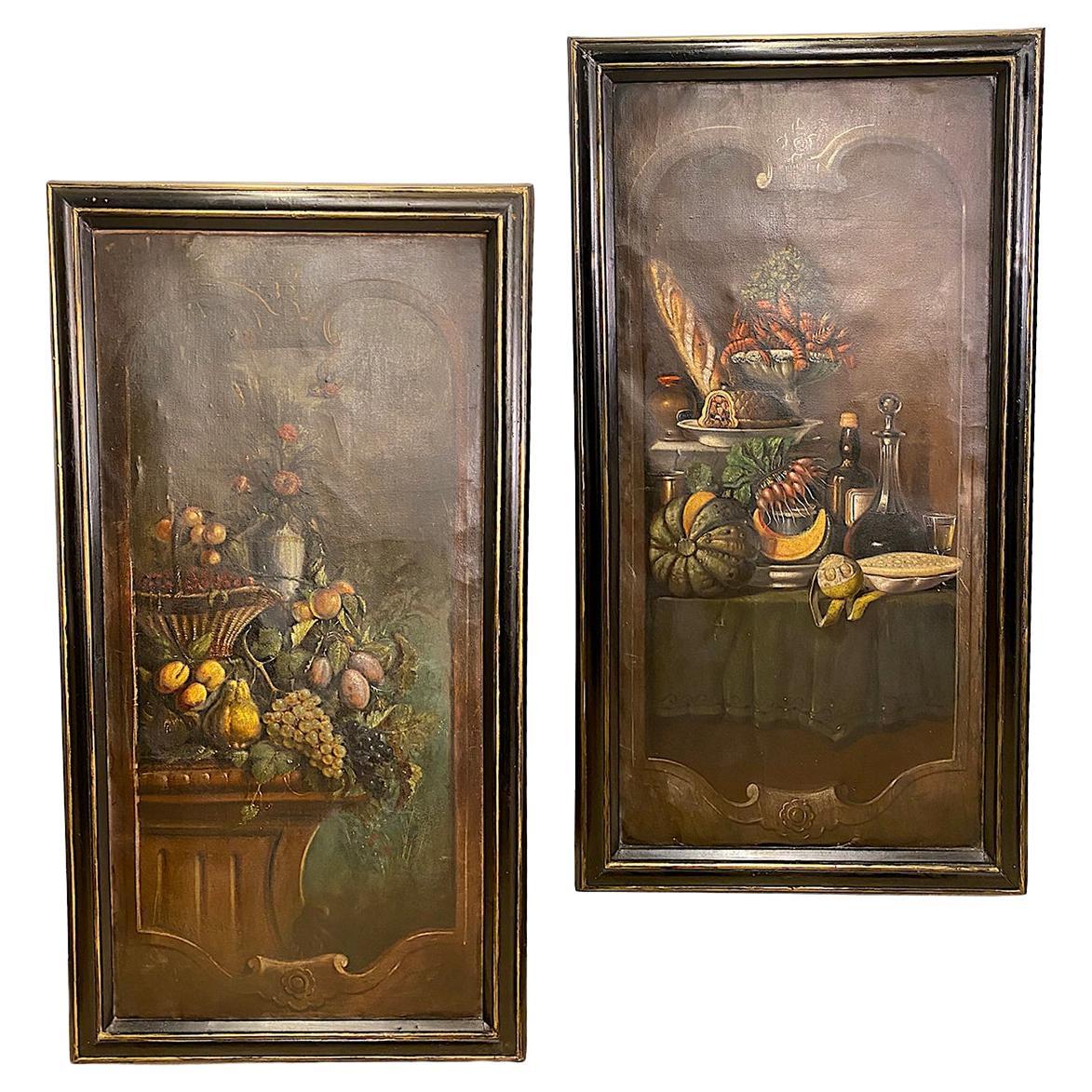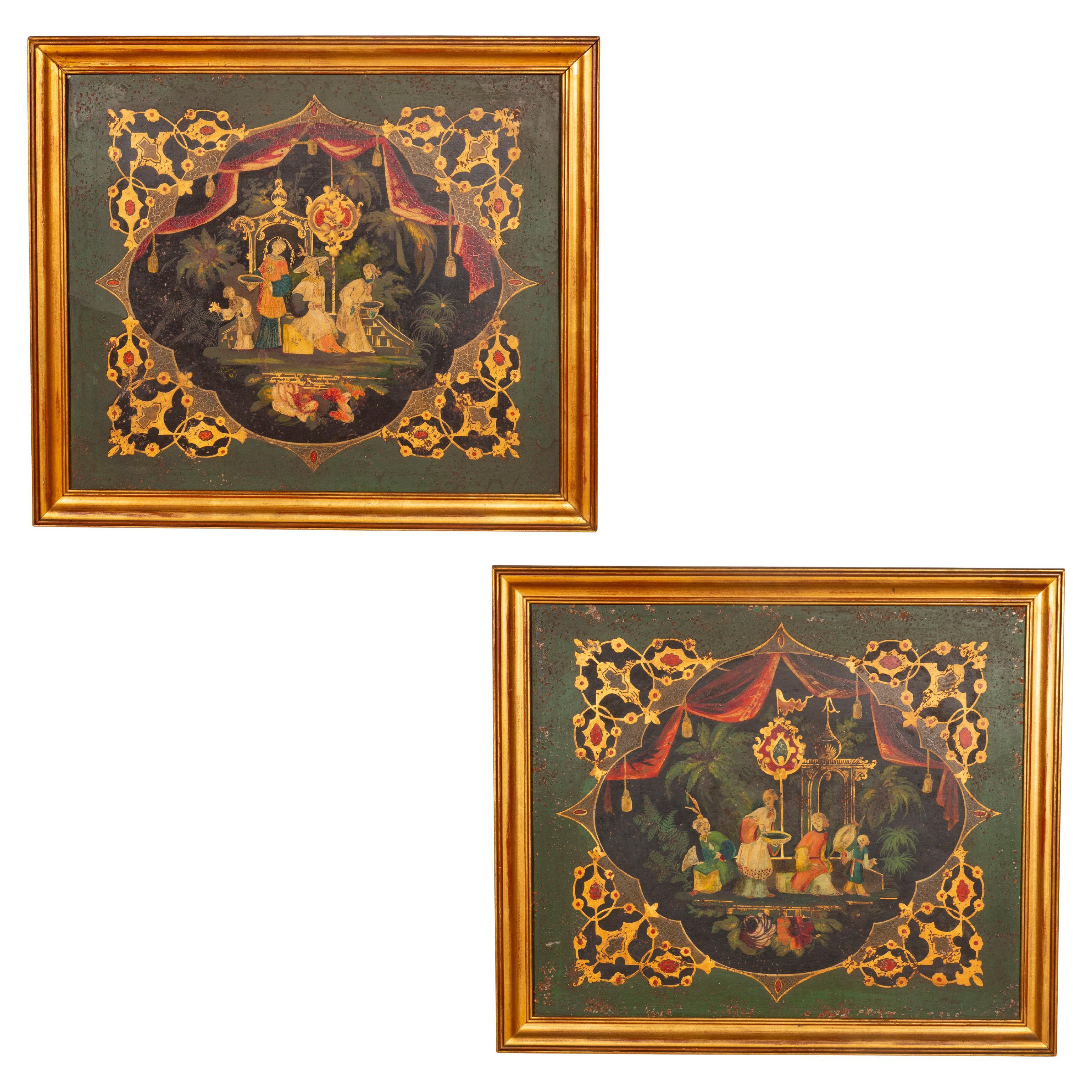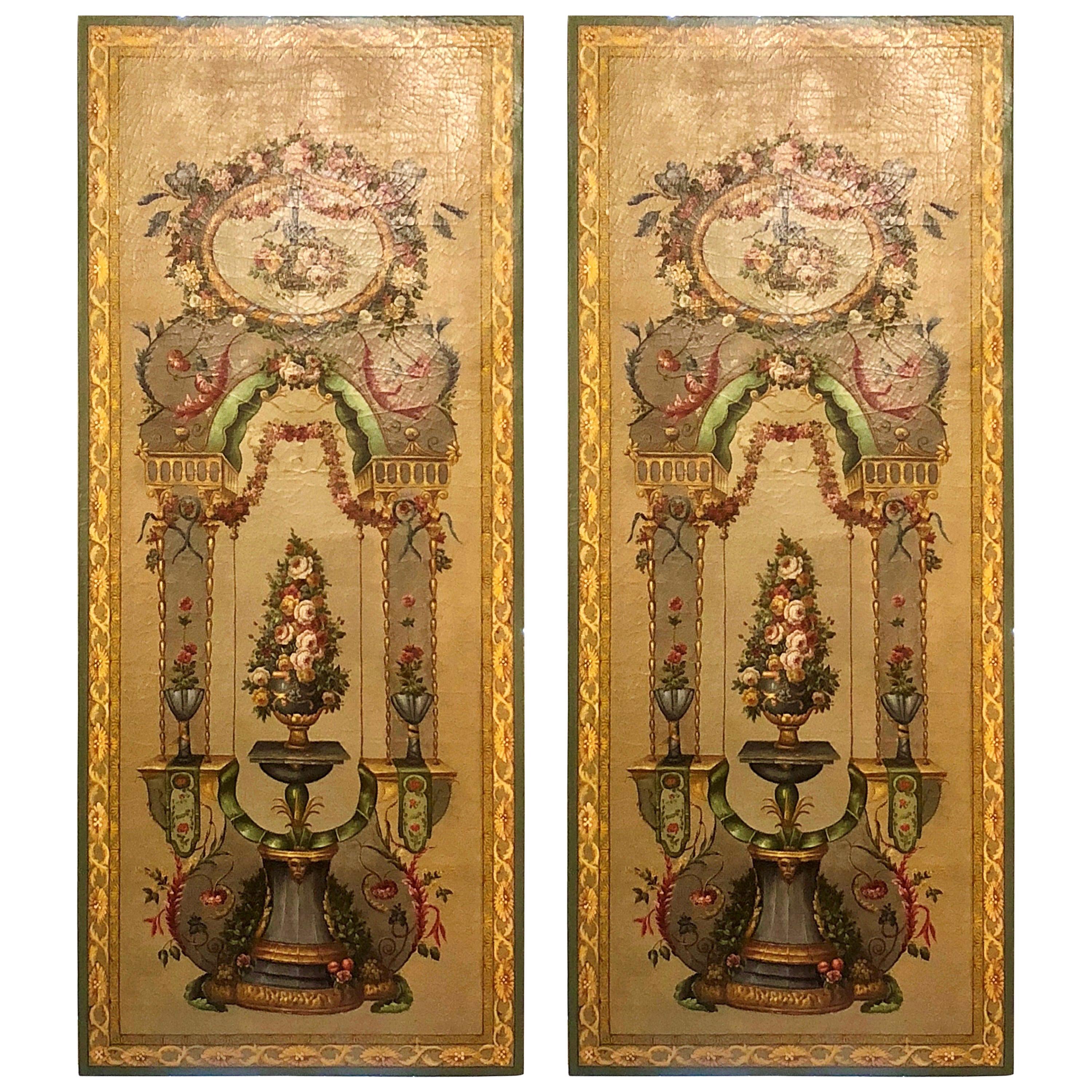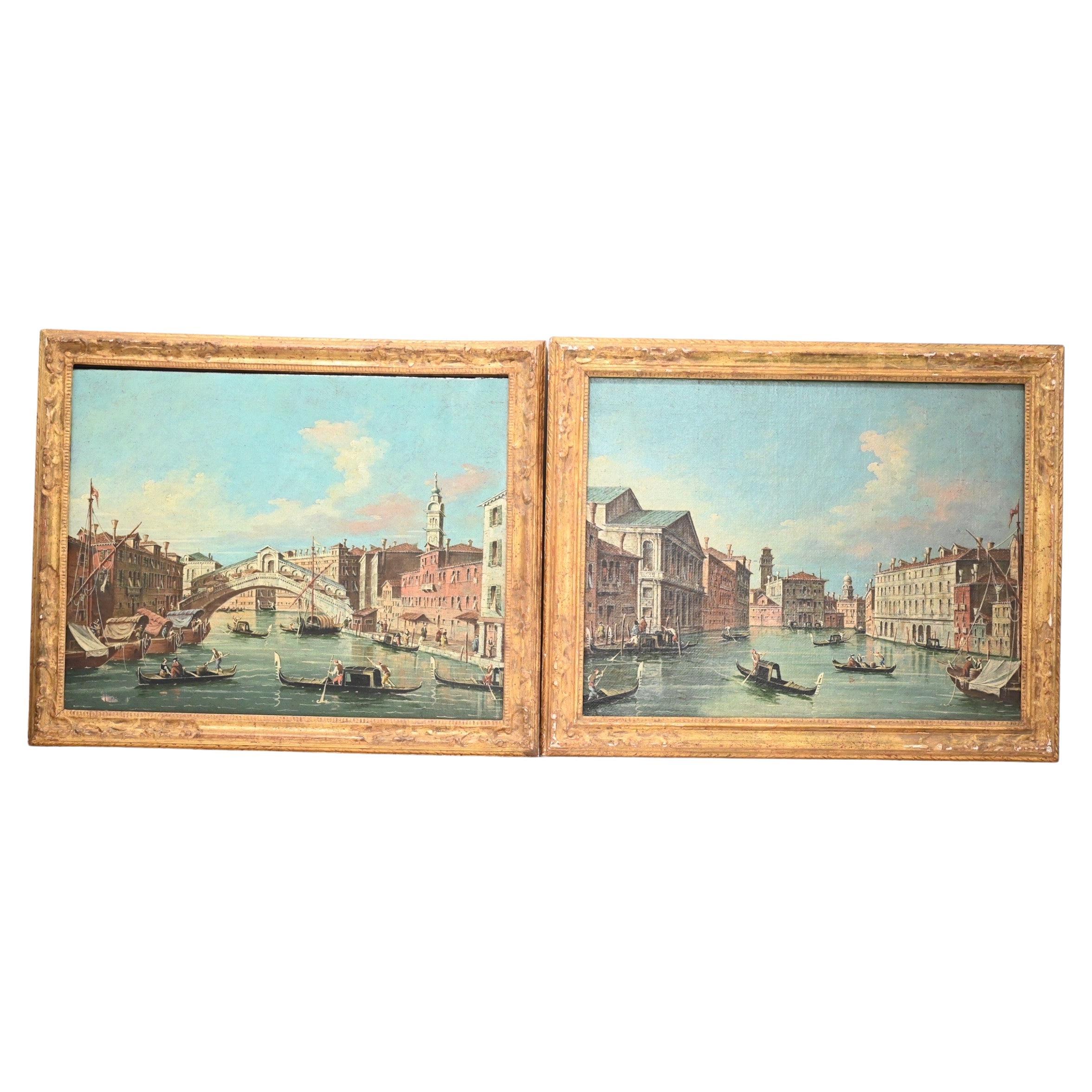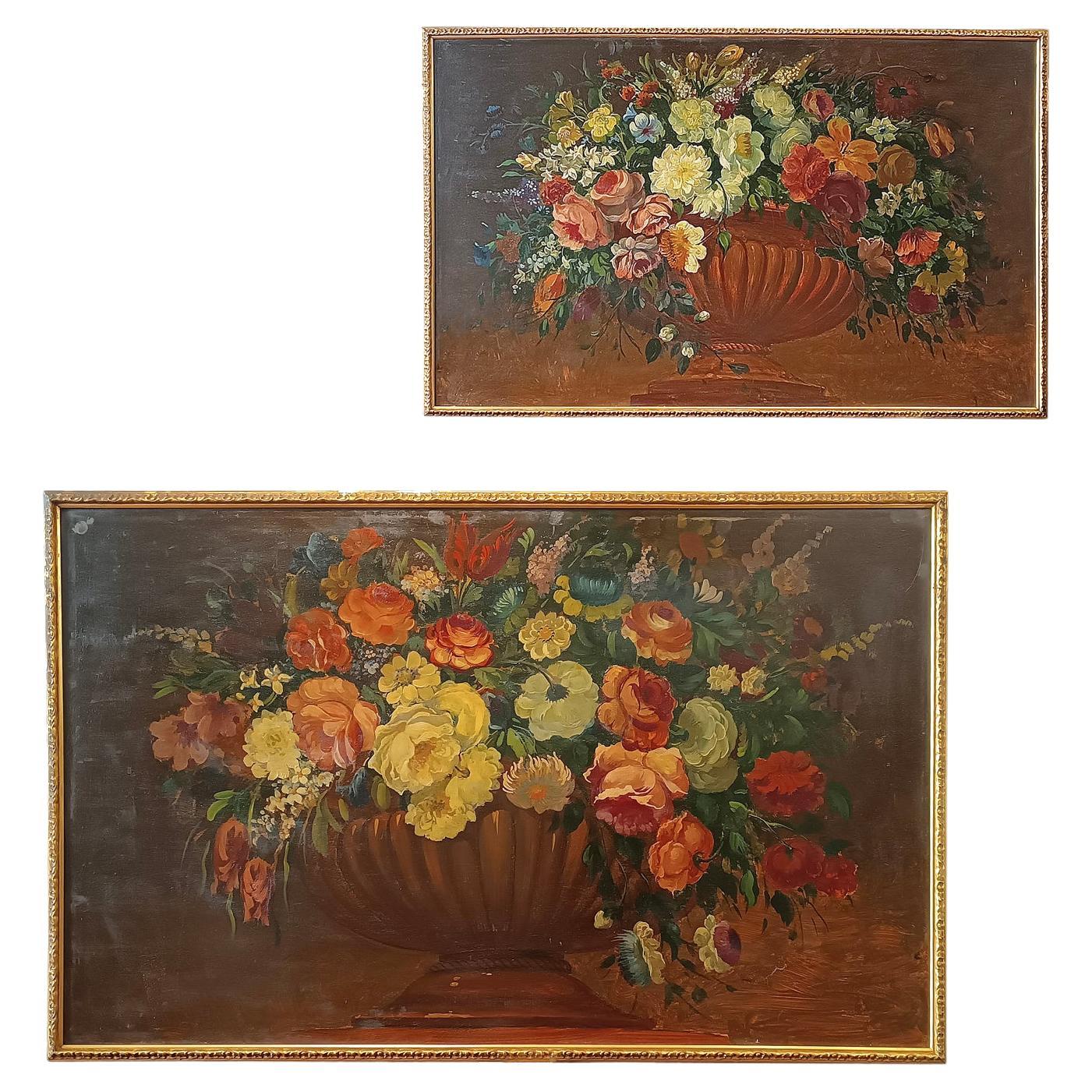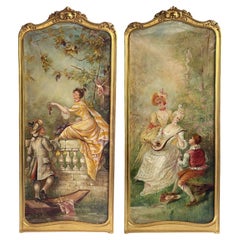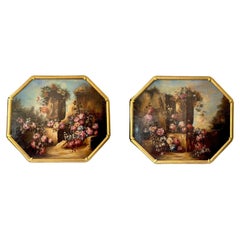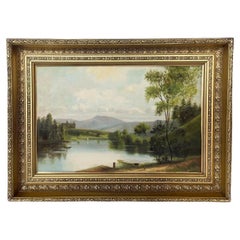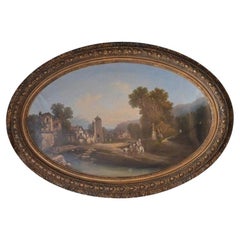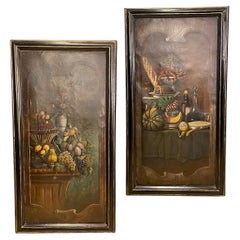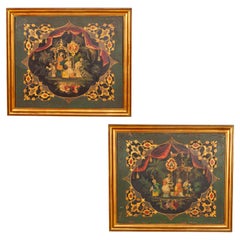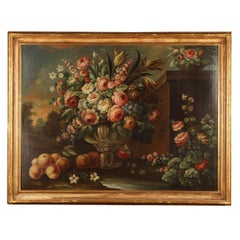Items Similar to Pair of Large 19th Century Italian School Paintings
Want more images or videos?
Request additional images or videos from the seller
1 of 14
Pair of Large 19th Century Italian School Paintings
$16,500
£12,526.52
€14,327.67
CA$23,052.89
A$25,639.85
CHF 13,388.33
MX$312,009.69
NOK 170,989.43
SEK 160,357.92
DKK 106,932.86
Shipping
Retrieving quote...The 1stDibs Promise:
Authenticity Guarantee,
Money-Back Guarantee,
24-Hour Cancellation
About the Item
An impressive pair of large 19th-century Italian School paintings, expertly restored and stretched to bring out the original vibrancy and detail of each piece. Recently set in elegant new frames, these artworks highlight the skillful brushwork and classic Italian themes that define the period’s artistic style. The restoration work respects the original patina while enhancing the color and clarity, making these paintings ideal as statement pieces for traditional or refined interiors. Perfect for collectors and enthusiasts of historical Italian art, these paintings offer timeless beauty and sophistication.
- Dimensions:Height: 60 in (152.4 cm)Width: 76.5 in (194.31 cm)Depth: 4 in (10.16 cm)
- Materials and Techniques:
- Place of Origin:
- Period:
- Date of Manufacture:19th Century
- Condition:Wear consistent with age and use.
- Seller Location:Los Angeles, CA
- Reference Number:Seller: PGD000271281stDibs: LU818842232972
About the Seller
4.9
Platinum Seller
Premium sellers with a 4.7+ rating and 24-hour response times
Established in 1999
1stDibs seller since 2006
402 sales on 1stDibs
Typical response time: 1 hour
Associations
20th Century Specialists
- ShippingRetrieving quote...Shipping from: Los Angeles, CA
- Return Policy
Authenticity Guarantee
In the unlikely event there’s an issue with an item’s authenticity, contact us within 1 year for a full refund. DetailsMoney-Back Guarantee
If your item is not as described, is damaged in transit, or does not arrive, contact us within 7 days for a full refund. Details24-Hour Cancellation
You have a 24-hour grace period in which to reconsider your purchase, with no questions asked.Vetted Professional Sellers
Our world-class sellers must adhere to strict standards for service and quality, maintaining the integrity of our listings.Price-Match Guarantee
If you find that a seller listed the same item for a lower price elsewhere, we’ll match it.Trusted Global Delivery
Our best-in-class carrier network provides specialized shipping options worldwide, including custom delivery.More From This Seller
View AllPair of French Late 19th Century Tall Oil on Canvas Paintings
Located in Los Angeles, CA
Elegant pair of tall oil on canvas paintings each depicting a romantic scene of lovers, both wearing traditional attire. The first painting depicts a lady feeding grapes to her lover...
Category
Antique Late 19th Century French Paintings
Materials
Canvas, Giltwood
Pair of Late 18th Century Italian Still Life Oil on Canvas
Located in Los Angeles, CA
A traditional pair of still life oil on canvas paintings, each depicting a Neoclassical style urn with human figure designs. Each urn is adorned with flowers inside and surrounding t...
Category
Antique Late 18th Century Italian Paintings
Materials
Canvas, Giltwood, Paint
Late 19th Century Italian Lakeside Oil on Canvas
Located in Los Angeles, CA
Antique oil on canvas made in Italy in the late 19th Century, depicting a lakeside view with trees all around and a fisherman on the back. It is protected by a carved giltwood frame....
Category
Antique Late 19th Century Italian Paintings
Materials
Canvas, Giltwood
19th Century Continental School Painting
Located in Los Angeles, CA
Continental, likely German, 19th century. Oil on canvas, housed in a gilt oval frame. A town scene, unsigned.
Category
Antique 19th Century German Aesthetic Movement Paintings
Materials
Canvas, Wood, Paint
Vintage Italian Painting by Giordano Giovanetti, c. 1950's
By Giovanetti
Located in Los Angeles, CA
Vintage Italian painting by Giordano Giovanetti depicting at the heart of the painting a poignant scene: a distraught ballerina sitting while ...
Category
Vintage 1950s Italian Paintings
Materials
Canvas, Wood, Paint
19th Century Panoramic French Pastoral Oil Painting
Located in Los Angeles, CA
A huge late 19th century oil on linen landscape painting of a French pastoral scene featuring hills, valleys, rivers, a castle, city, lake and peasants and nobility as well as animal...
Category
Antique 19th Century French Baroque Paintings
Materials
Canvas
You May Also Like
Pair of Antique Italian Paintings
Located in New York, NY
Pair of circa 1920's Italian still life paintings.
Measurements:
Height: 50.25"
Width: 26.25"
Depth: 1.5"
Category
Vintage 1920s Italian Paintings
Materials
Canvas
$6,200 / set
Pair of French Painted Tole Panels
Located in Essex, MA
Each panel with chinoiserie decoration in the western fashion.
Category
Antique 1870s European Decorative Art
Materials
Tin
$2,400 / set
Pair of Antique 19th Century Tromp L'oeil Painted Panels
Located in New Orleans, LA
These painted panels are very pretty with their floral elements and soft colors. At nearly 7 feet high, they would do well next to a sideboard or in an entryway.
Category
Antique Early 19th Century French Paintings
Materials
Paint
Pair of 19th Century Italian School Still Life Large Oil-On-Canvas Painting with
Located in San Marino, CA
A 19th century Italian school life large oil-on-canvas painting within a gilt wood frame painting depicts a vase with a floral arrangement, a...
Category
Antique 19th Century Italian Romantic Paintings
Materials
Wood, Paint
Exceptional Pair of Antique Venetian Oil on Canvas Painting Mid 19th Century
Located in Media, PA
This is a very lovely pair of Italian Venetian oil on canvas paintings with fantastic scenery with beautiful workmanship. The colors are very vivid and painted very well. The details...
Category
Antique Mid-19th Century Italian Paintings
Materials
Canvas
EARLY 19th CENTURY PAIR OF PAINTINGS WITH FLOWERS
Located in Firenze, FI
Pair of oil paintings on wooden panels, framed in a carved and gilded wooden frame. The paintings depict two still lifes with flowers, placed in bronze vases of the "kantharoi" type....
Category
Antique Early 19th Century Italian Paintings
Materials
Wood, Paint
More Ways To Browse
Antique German Lighter
Antique Jade Dragon
Antique Koi
Antique Olive Oil Jars
Antique Pine Blanket Box
Antique Rifle
Antique Serpentine Dresser
Antique Stag Painting
Antique Sunderland
Antique Tiffany Clocks
Antique Window Screens
Antique Wood Ducks
Bakelite Furniture Pulls
Bamboo China Cabinet
Bellini Cat
Bookmatched Burl
Bow Front Desk
Bronze Gong
